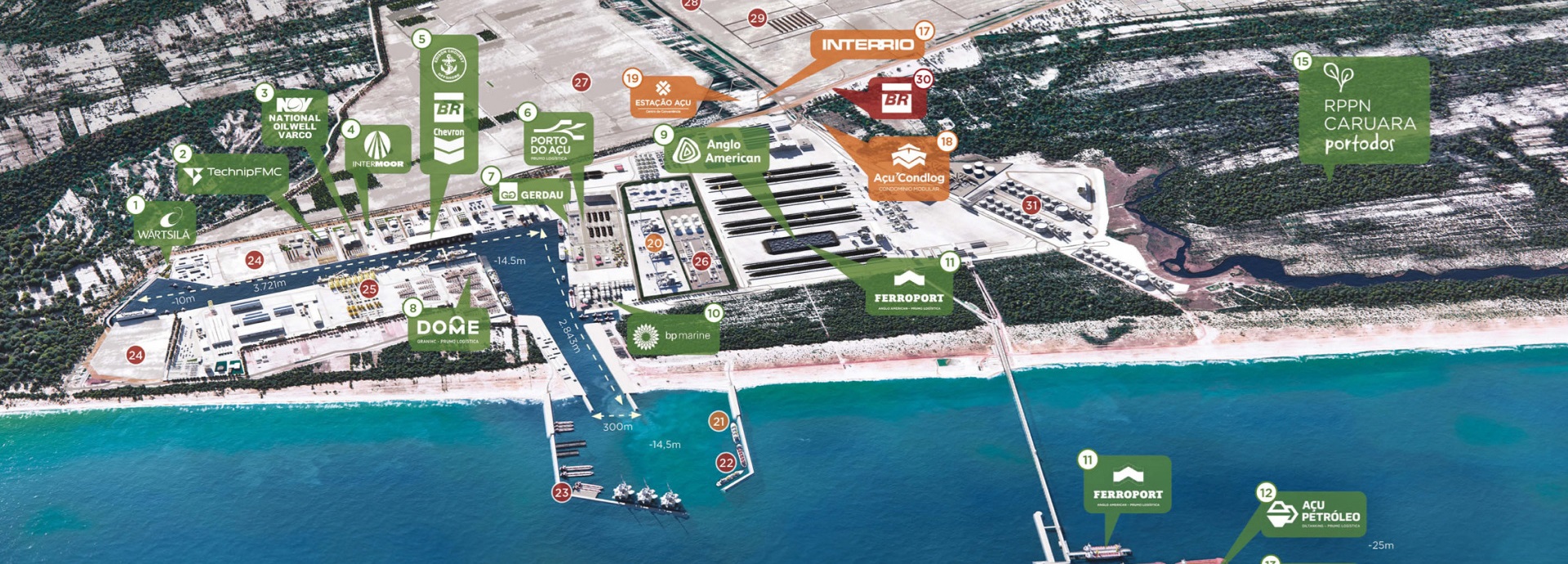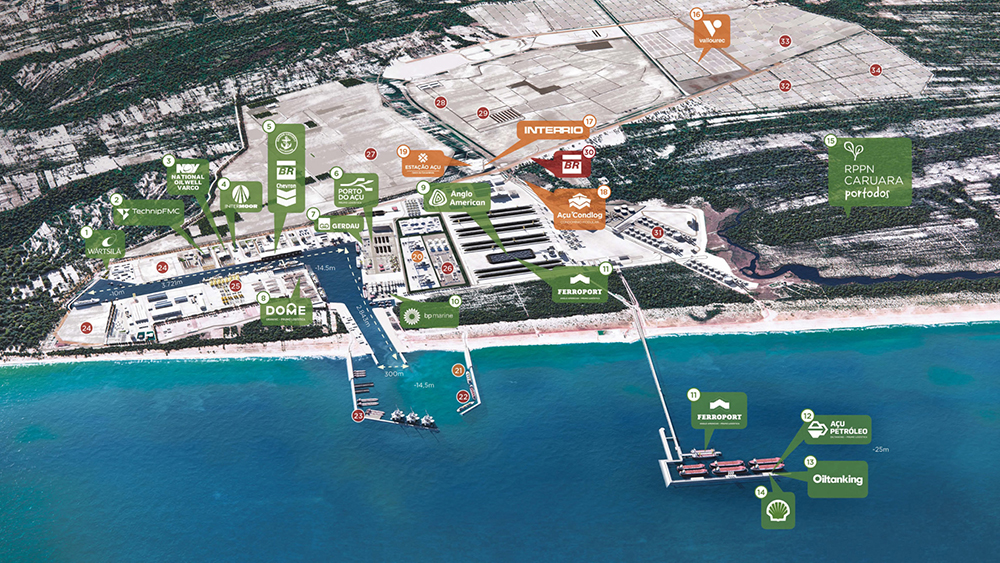

New VTS streamlines logistics at Port of AcuNew VTS streamlines logistics at Port of Acu
Port of Aҫu is a 100% privately-owned port in Brazil, operated by Brazilian infrastructure company Prumo Logistica SA. In operation since 2014, Port of Açu has a total area of 130km². Due to its strategic location and numerous onshore and offshore iron ore, oil and multi-fuel terminals, it is known as a “Port of Opportunities”.
Solution
Remote location Port of Opportunities: Wärtsilä opened a production and assembly plant for azimuth generators and thrusters in the Port of Açu. The unit is located on 22,193 m² on the canal on Terminal 2 and also offers energy and marine propulsion services and solutions.Due to potentially dangerous cargo shipment and the VLCC vessels’ anchoring, there is need to integrate all existing sensors in one system (i.e. radar, 7 cameras, 2 marine radios and meteorological sensors), with playback capabilities synchronized.
Results
Wärtsilä suggested an integrated approach for existing sensors (i.e. integrated CCTV cameras, radar, AIS, with the exception of VHF radios) into the Navi-Harbour system. Outcomes Three stations in total, i.e. two operators and one supervisor station, received: 3 operators stations 2 VHF stations Redundant VTS server 1 VTS Database 1 Radar integration 7 CCTV Cameras integration 2 AIS Base Station 1 Set of meteorological sensor integration The first picture shows the radar image of the port with targets in green color. The second picture shows Port influence area. Third picture is the Map of the Port with the Terminals. Credit: Portodacu.



